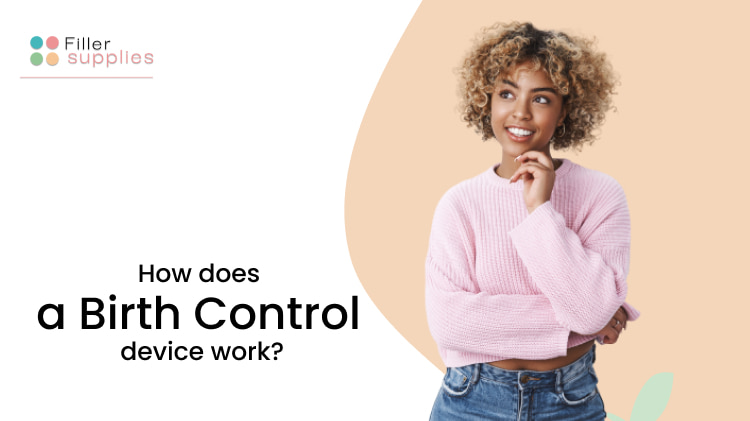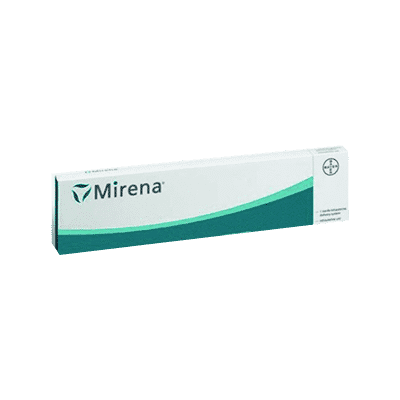How Does a Birth Control Device Work?

Did you know that about fifty years ago birth control methods were prohibited for single people in the United States? Up until 1972, only married couples had the right to legally use contraception, while the ones that were not in an official marriage didn’t have the right to control their pregnancy.
Luckily, contraception is not only legal these days but also enumerates a number of methods that are available these days. Namely, you might choose from condoms, pills, injections, intrauterine devices, and many other things when it comes to family planning.
If you are especially interested in such methods of family planning as birth control devices, check out this article. This way, you will get to know what it is and how does it work and, therefore, decide whether it is something that is worth trying in your particular case.
P.S. In case you are currently looking for a reliable online reseller to order birth control devices from, try out FillerSupplies. While being more than seven years on the market, the company will provide you with fast worldwide delivery and a fair pricing system.
What Are the Main Birth Control Methods?
Nowadays, you might choose from a great variety of family planning methods. Depending on their main peculiarities, you might distinguish between the following types of contraception:
- Hormonal and non-hormonal;
- Permanent and temporary;
- Male and female;
- Etc.
When being more precise, here is the list of main birth control methods:
- A non-reversible surgery. It is a radical method of family planning that either disables a male to produce sperm or a female to ovulate;
- Natural family planning. This method of contraception includes menstrual cycle tracking and, in some cases, the pull-out method. It is the most inefficient but at the same time cheap and riskless way of birth control;
- A condom. While being both male and female, condoms belong to the barrier methods of family planning. Their great advantage is that they do not only protect you from unwanted pregnancy but also from AIDS, syphilis, and other sexually transmitted diseases;
- A pill. It is one of the most widely spread methods of family planning with more than 99 percent of effectiveness. However, it requires strict regularity at the same time;
- An emergency contraception pill. In case you have already had unprotected sex, you might still use an emergency contraception pill in order not to get pregnant;
- A birth control implant. It is an effective method of contraception that employs a tiny tube being injected under the skin of your upper arm;
- An intrauterine device. Both a non-hormonal (Copper-based) and hormonal IUD belong to efficient contraceptive options and have similar working principles;
- Etc.
While each above-mentioned method of birth control has its own benefits and drawbacks, every person will definitely be able to find the one that fits their needs best.
A safety note: It is strongly recommendable to consult with your health care practitioner when it comes to family planning methods. This way, the doctor will not only investigate your particular case but also provide you with the most suitable option of birth control.
What Is an Intrauterine Device?
To make sure that we are on the same page, let us define what is an intrauterine device (or, in other words, an IUD). In simple terms, it is a device that is efficiently used as a family planning method. It is a tiny T-shaped piece of plastic that is placed inside the uterus. For this reason, a birth control method that involves the IUD might also be called intrauterine contraception.
The basic advantages of an IUD method of family planning are the following:
- It is long-lasting. Under normal circumstances, an IUD might remain in your body and, therefore, prevent pregnancy you do not expect for the time period from three to ten years;
- It is reversible. In case you have decided to get pregnant while using an IUD, you can do so shortly after the device is removed from your body. Usually, the normal monthly cycle and fertility return to you immediately;
- It is extremely effective. The usage of an IUD will provide you with more than 99 percent of effectiveness when it comes to preventing unwanted pregnancy.
On the other hand, however, an IUD birth control option might have several drawbacks, namely:
- It might lead to such side effects as breast tenderness, irregular bleeding, and so on;
- It does not protect from sexually transmitted diseases;
- It slightly increases the risk factors of pelvic inflammatory disease or ectopic pregnancy.
A safety note: In case you have noticed such symptoms as unexplained vaginal bleeding while using an IUD, contact your health care practitioner as soon as possible.
The Main Types of Intrauterine Devices (Copper and Hormone Progestin Based)
There are two main types of IUDs, namely:
- Hormonal (namely the ones that are based on the progestin hormone);
- Non-hormonal (or, as they are also referred to, copper intrauterine devices).
Prime examples of hormonal IUDs are Mirena, Liletta, and Skyla. While the most well-known representative of a non-hormonal IUD is ParaGard.
Skincare Resolutions Dermatologists Want You to Make in 2022 was recently released. You should check out our article for everything you need in one place.
The Working Principle of an Intrauterine Device
One of the Intrauterine Device
A hormonal and a non-hormonal IUD have similar on the one hand but slightly different on the other hand working principles. Let’s take a closer look at each of them.
Hormonal contraception that is provided by an intrauterine device works in the following way: Once being inserted into your uterus, a hormonal IUD starts to release a tiny amount of progestin into your body. The hormone, in its turn, affects the sperm cells so that it becomes impossible for them to reach the egg. As well, the hormonal IUD can prevent ovulation by means of disabling the egg to release from the ovary. In other words, progestin affects your body as follows:
- It thickens your cervical mucus so that the sperm cannot reach the egg;
- It thins the uterine lining so that the fertilized egg cannot get implanted.
While non-hormonal birth control, in its turn, functions as follows: After the doctor inserts it into your uterus, the copper wire that is coiled around the IUD initiates the inflammatory reaction that is toxic to both sperm and eggs. Therefore, it is a method of preventing pregnancy by means of creating an unsustainable environment for sperm cells and fertilized eggs.
A Bottom Line
So, the usage of a special family planning device is an effective way of contraception nowadays. While being of either hormonal or non-hormonal origin, an IUD assists you in preventing unwanted pregnancy by means of developing an unsustainable environment for the sperm and eggs.
Still, it’s only up to you and your health care practitioner to decide whether this method is suitable in your particular case. So, contact your doctor right away and take efficient care of your birth control!


